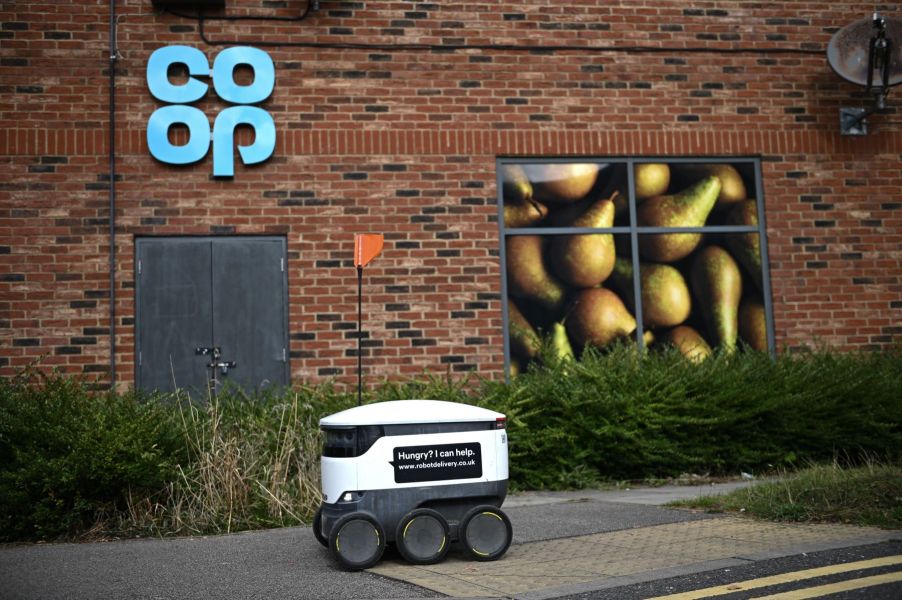
Robot Grocery Delivery Begins With Only a Few Getting Lost
Most of us have heard of grocery delivery services such as Instacart, Shipt, and Postmates. You place an order, make an online payment, and the groceries arrive on your doorstep. The caveat is a driver has to get into a vehicle fueled by a gas-powered engine to make the delivery, consuming natural resources and adding to traffic congestion.
The advent of autonomous robot grocery delivery is taking the world by storm as an innovative and environmentally-friendly way to help customers receive packages without leaving their homes.
Starship Technologies is at the forefront of robot-powered EV grocery delivery, successfully completing more than three million deliveries since the program’s inception in 2014. Consumers love the concept, and since the program began, only a few of the robots have gotten lost.
Are robots the next big thing in grocery delivery?

According to a press release issued by Starship Technologies, the innovative company plans to “meet increasing demand for its autonomous delivery service by launching in new cities in North America and Europe.” The company has immediate plans to roll out the delivery robot program on several U.S. college campuses, starting with North Carolina A&T, South Dakota State University, and SMU in Dallas, Texas.
The CEO of Starship Technologies, Alastair Westgarth, said, “The demand for Starship’s services continues to rapidly increase, and we are regularly contacted by more college campuses and cities that want our services, often because they hear about the results that Starship is already delivering.”
The company manages the world’s largest fleet of autonomous delivery robots, with more than 1,700 units operating daily. BBC News reports that 10 cameras positioned on the robots combined with radar, ultrasound, and GPS technology help the autonomous devices traverse roadways, navigate obstacles, and safely cross streets to make deliveries. The lightweight robots cannot travel faster than the average walking pace of 4 mph.
To use the service, customers select food or drink items, drop a pin of the desired delivery address, and watch the robot via an interactive map make its journey. The customer will get an alert when the delivery arrives, and they can unlock the robot to retrieve their package via a downloadable app on an Android or iOS device.
The Starship grocery robot that took a wrong turn
Powered by zero-carbon electricity, artificial intelligence allows the robots to travel short distances without needing a driver or any other human intervention to make the delivery.
As with any growing technology, it is not always perfect, and there is expected room for error. For example, a history professor at the University of Northampton in England was taking a leisurely stroll through the woods when he came across a grocery delivery robot. When he posted a photo on Twitter, he was surprised to receive more than 240,000 likes with over 2,000 replies.
According to BBC News, Starship Technologies retweeted the photo with the caption, “Not lost, simply on an adventure!” The innovative company later replied, “Not all robots who wander are lost, some are on a delivery to its next customer!”
Plans for robotic expansion
BBC News recently reported Cambridgeshire is embracing the grocery delivery program, and 5,000 homes will start receiving robot deliveries. The county council hopes to improve air quality by reducing car journeys as part of their environmental policy initiative. They claim, “the firm behind the robots said in an average delivery journey these used energy equivalent to that needed for a kettle to boil a cup of water.”
If all goes well, the council intends to expand the robot delivery program across the county to reduce vehicle congestion on local roadways.
Starship Technologies has plans to expand the grocery delivery program to include parcel delivery and could revolutionize how customers receive their packages, giving Walmart and Amazon a run for their money.
RELATED: Self-Driving Service: Big Companies Using Autonomous Delivery Cars


